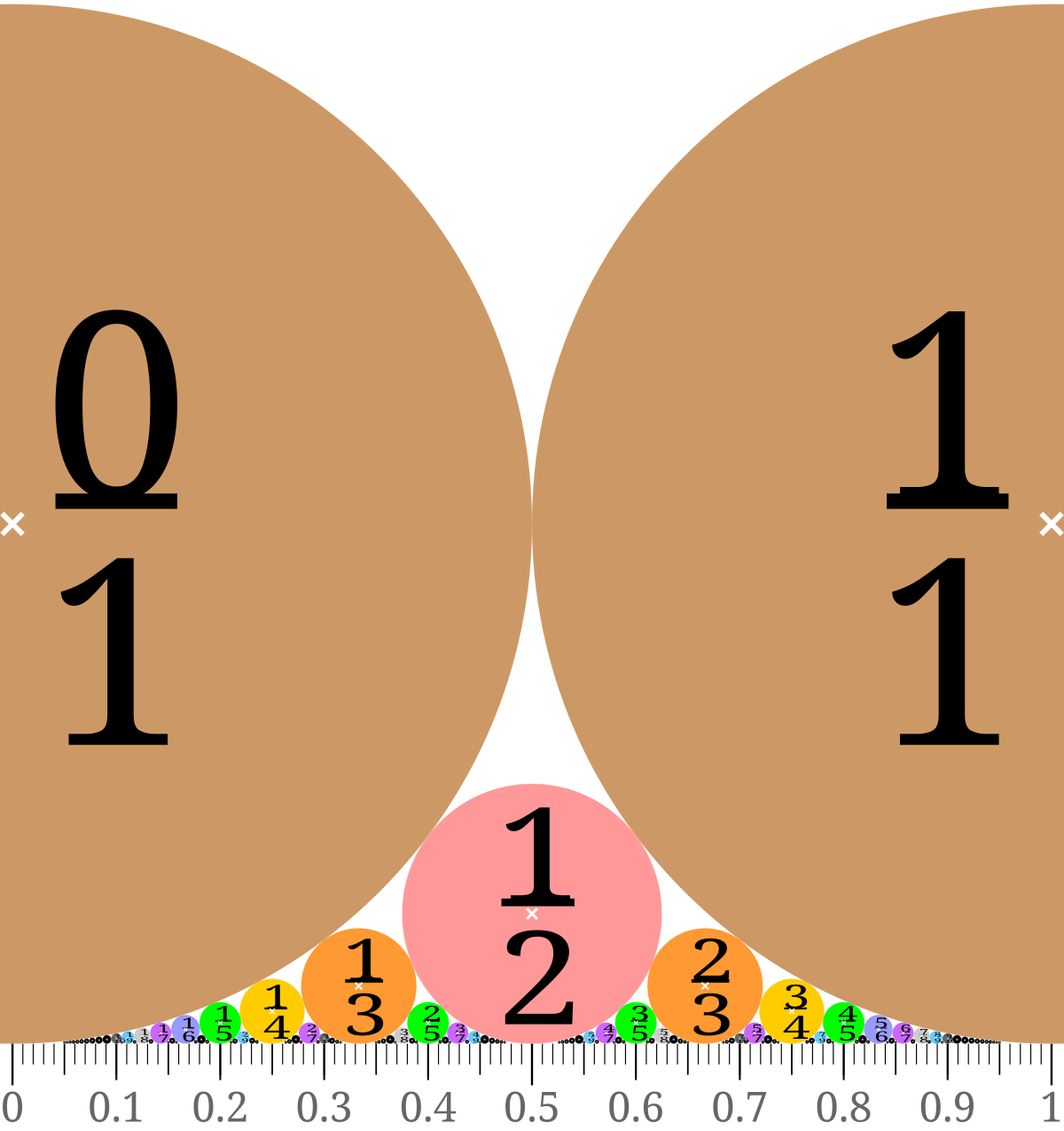
Ford circle - Wikipedia
In mathematics, a Ford circle is a circle in the Euclidean plane, in a family of circles that are all tangent to the x {\displaystyle x} -axis at rational points. For each rational number p / q {\displaystyle p/q} , expressed in lowest terms, there is a Ford circle whose center is at the point ( p / q , 1 / ( 2 q 2 ) ) {\displaystyle (p/q,1/(2q^{2}))} and whose radius is 1 / ( 2 q 2 ) {\displaystyle 1/(2q^{2})} . It is tangent to the x {\displaystyle x} -axis at its bottom point, ( p / q , 0 ) {\displaystyle (p/q,0)} . The two Ford circles for rational numbers p / q {\displaystyle p/q} and r / s {\displaystyle r/s} (both in lowest terms) are tangent circles when | p s − q r | = 1 {\displaystyle |ps-qr|=1} and otherwise these two circles are disjoint.[1]
Ford circles are a special case of mutually tangent circles; the base line can be thought of as a circle with infinite radius. Systems of mutually tangent circles were studied by Apollonius of Perga, after whom the problem of Apollonius and the Apollonian gasket are named.[2] In the 17th century René Descartes discovered Descartes' theorem, a relationship between the reciprocals of the radii of mutually tangent circles.[2]



















